Web materials are not perfect, and neither are converting machines. Web guides are needed to reduce waste due to web misalignment.
Web Guiding Principles
Video courtesy of Jerry Brown at normalentry.com
Web guides are able to steer or guide the web because of the Normal Entry rule. This rule refers to the propensity of the web to align itself perpendicular to the axis of rotation of the roller it is approaching; provided there is no slippage between the web and the roller. Hence the web guides steer or guide or displace the web by deliberately changing the axis of rotation of the roller(s) on the web guide.
The Normal Entry rule is applicable to any fixed or moving roller on a roll-to-roll converting machine. Hence any roller that is misaligned within the machine would cause the web to move.
Basic Components of Web Guides
Guide mechanism is typically a mechanical structure that makes contact with the material and moves the web material. Depending on the type of web guide, the shape and size of the guide mechanism are varied. An actuator moves the web guide mechanism to guide the web at the appropriate location.
A web edge sensor or a web position sensor detects the position of the web material. This measurement is used to determine and control the desired position of the material.
The Controller is the brain of the web guiding system. The controller uses the measurement from the sensor to determined the necessary corrective action. The controller then command the actuator to move the guide mechanism to actively control the web position.
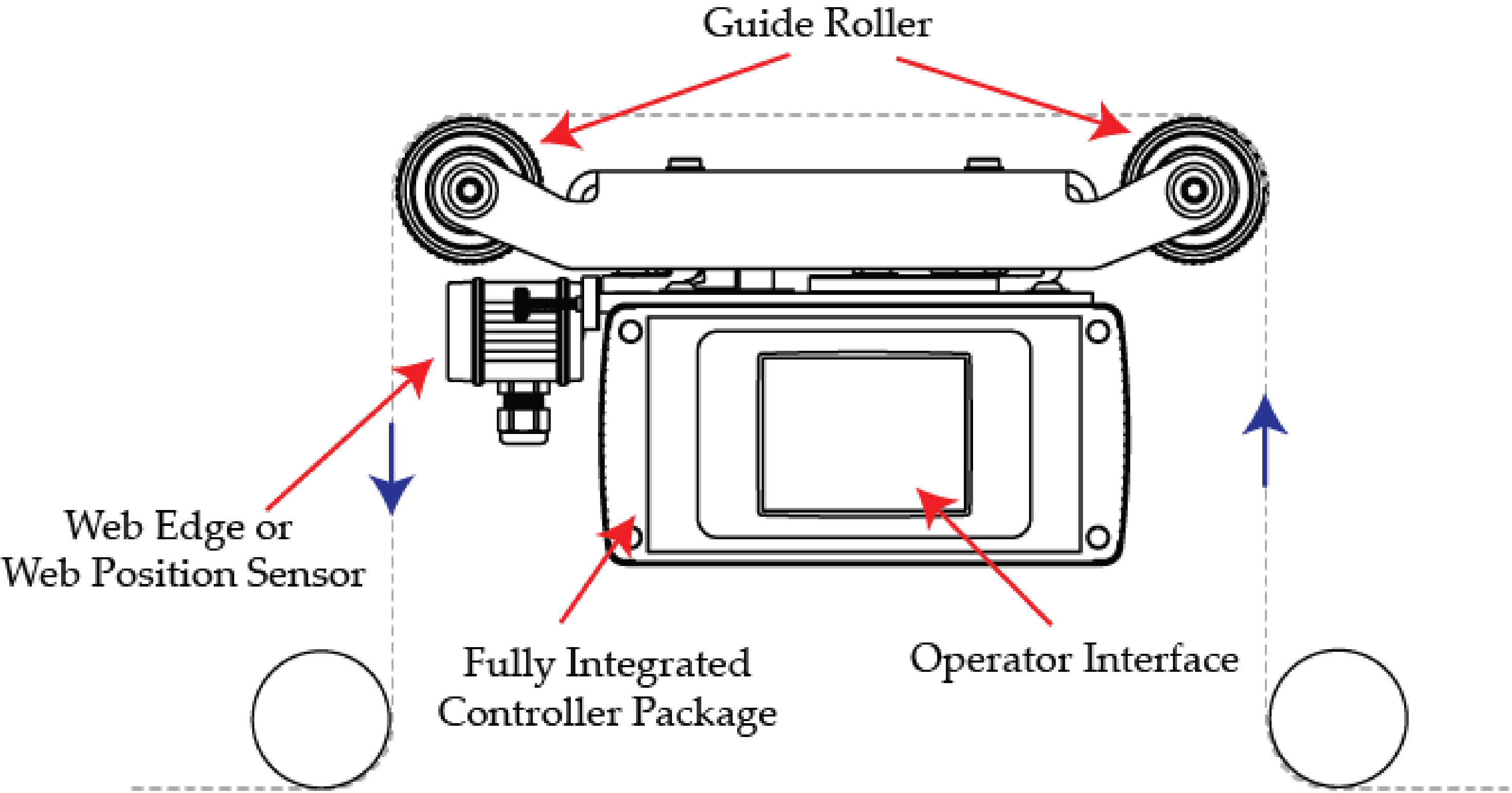
Displacement Guides or Offset-Pivot Guides
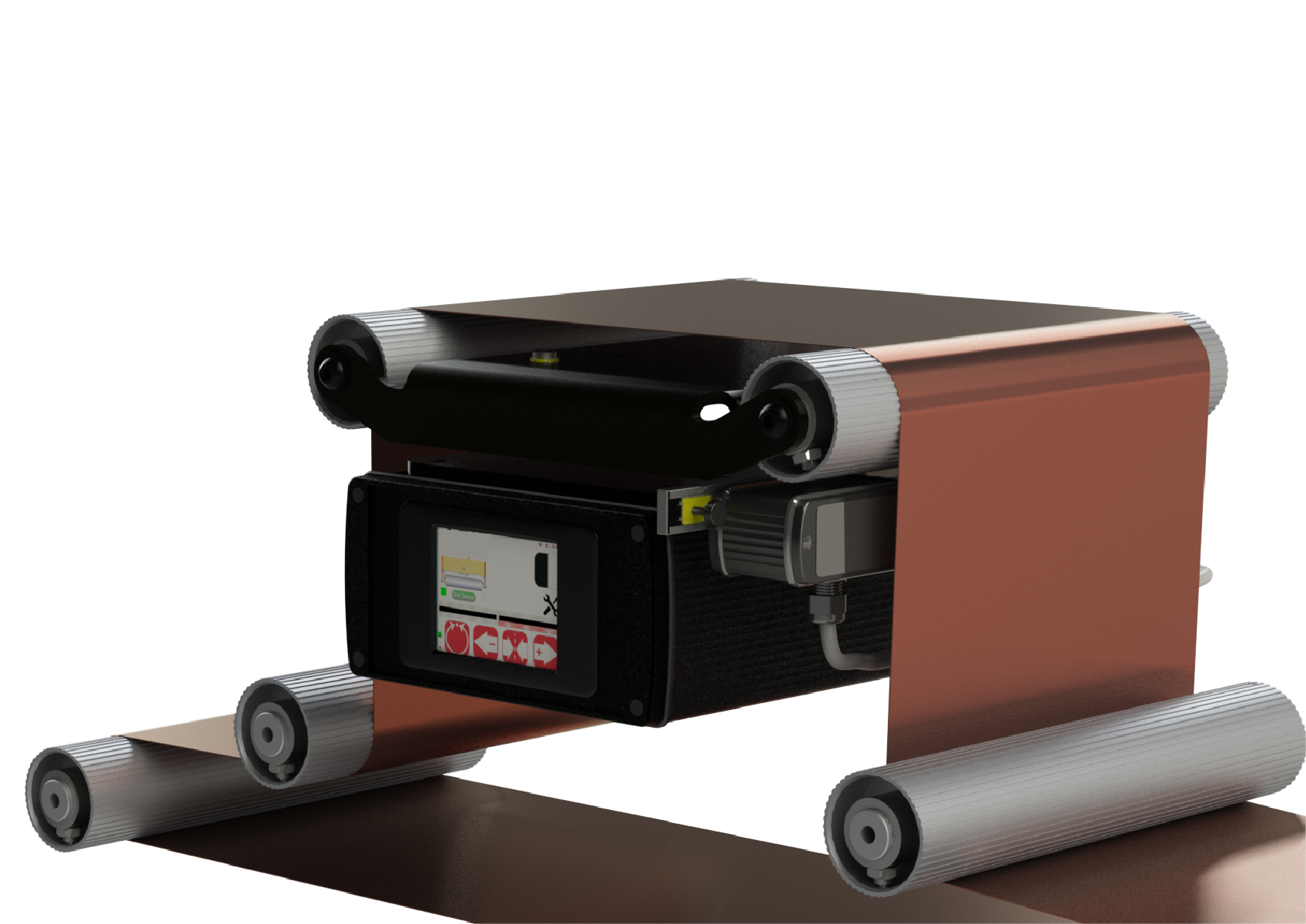
Displacement guides are the most common intermediate web guides used in the industry. These web guides are the workhorse of intermediate web guides because of their design and simplicity. The design includes two rollers on the web guide mechanism that rotate about an imaginary pivot point. Hence they are also called an offset-pivot guide.
A well designed displacement guide with proper installation can significantly reduce the stresses on the web. The two roller guide platform enables pure displacement of the web with minimal bending stresses on the web. This pure displacement action enables web correction with minimal entry and exit span requirements.
Steering Guides or Remotely Pivoted Guides
Steering guides are typically used in specific applications where a displacement guide would not work. These applications include processes with long entry spans, such as an exit of an long oven. These guides have one or two rollers that travel over an arc. The center of the arc is typically located in the upstream span. Hence they are also called as remotely pivoted guide.
The steering guide bends the web in the entry span to create the lateral motion. The amount of bending depends and ultimately the amount of correction is dependent on the radius of the arc, the span length or the entry span and also the bending stiffness of the web material. Even though the steering guide looks simple, the installation of a steering guide requires a lot of attention.
The steering guide has one advantage especially in installations with long entry spans. Since the correction is due to bending, the steering guide can affect the web position within the upstream entering span.
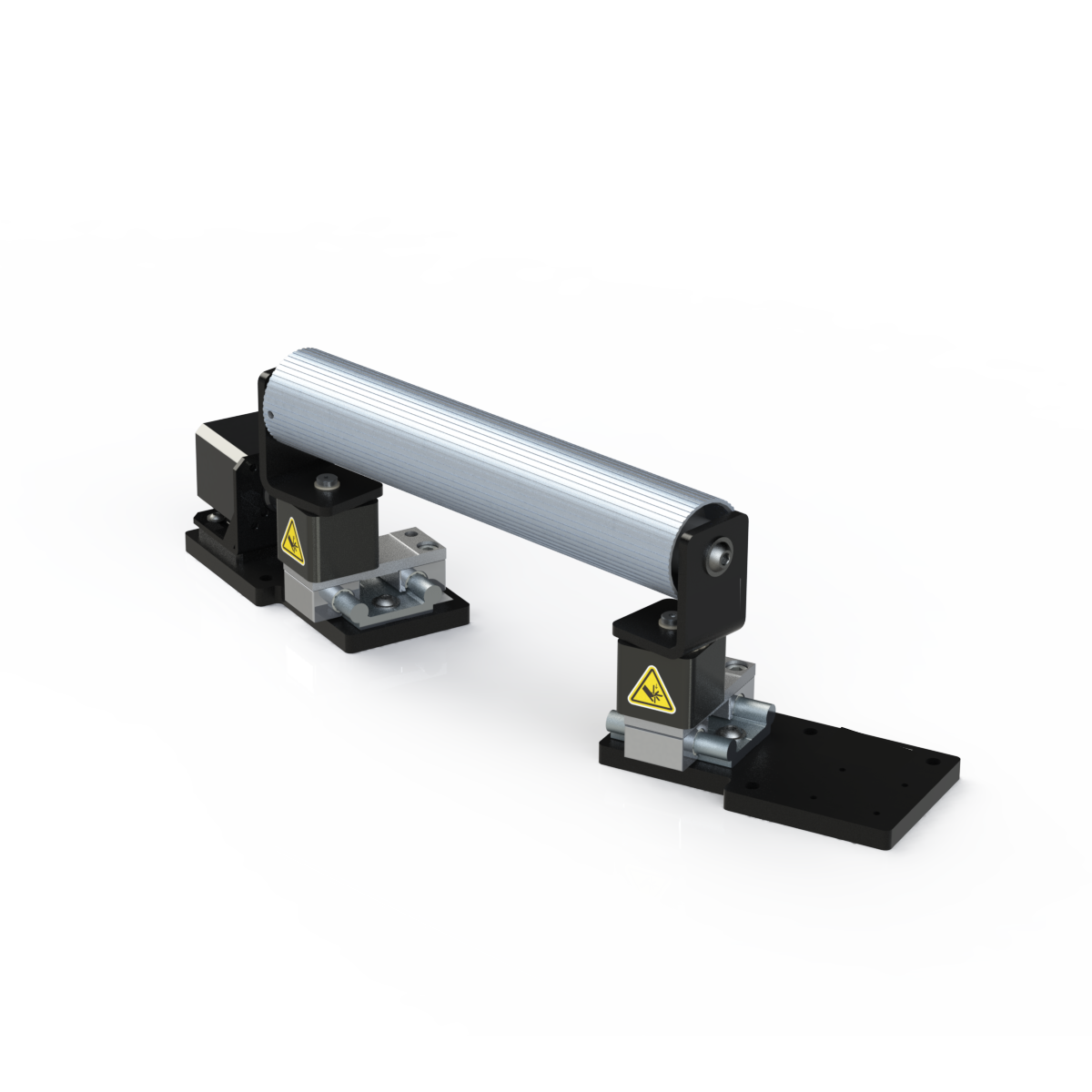
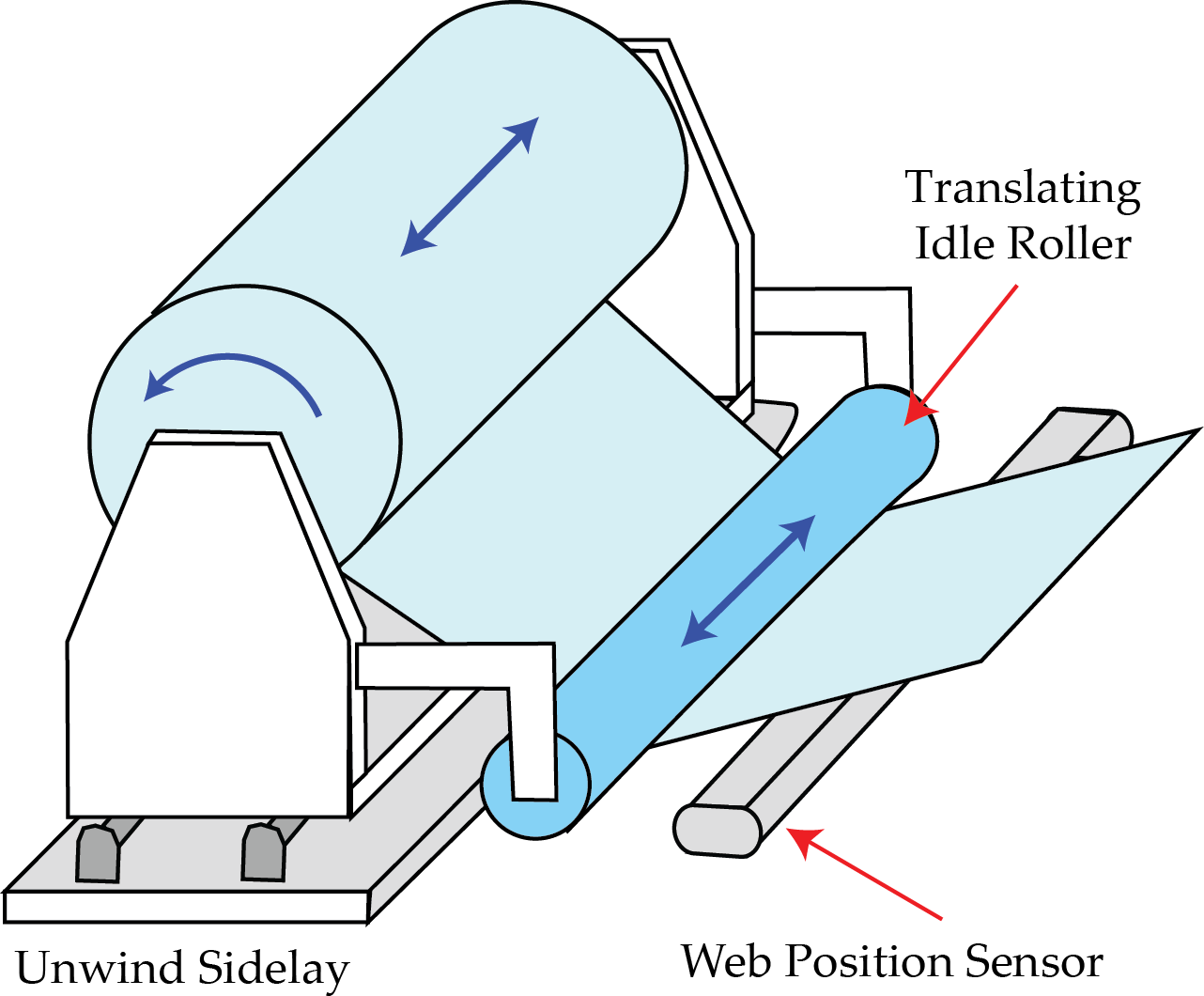
Unwind Guides
Unwind guides are a type of terminal web guides that align the web fed into a converting machine. Unlike the terminal web guides, no pivoting motion is necessary for these types of web guides. Typically a carriage or a side lay that carries the entire roll of web material is moved in the cross machine direction. The carriage is typically mounted on high precision linear bearings. High thrust linear actuators that can move the entire carriage plus the wound roll are typically used.
Unwind guides usually include an idle roller attached to the moving carriage. This idle roller is used to stabilize the web so the sensor sees a constant web without any plane changed caused by the roll diameter changes. The web edge sensor is mounted on a fixed machine frame.
Rewind Guide
Rewind guides are used at the end of a roll-to-roll machine. The web wound on the roller is guided to ensure that the wound roll is not telescoping. Rewinds guides are becoming less common since they are being replaced by intermediate guides.
Rewind guides are similar to unwind guides. An actuator moves a carriage supported on precision linear bearings to guide the winding roll. However, a rewind guide does not guide the web. Rather the rewind guide chases the web to align the different layers of the wound roll. Hence in order to chase the web, the sensor is mounted on the moving carriage and the idle roller is attached to the fixed frame of the roll-to-roll machine. The way the sensor and the idle roller are mounted is the key difference between unwind and rewind guides.
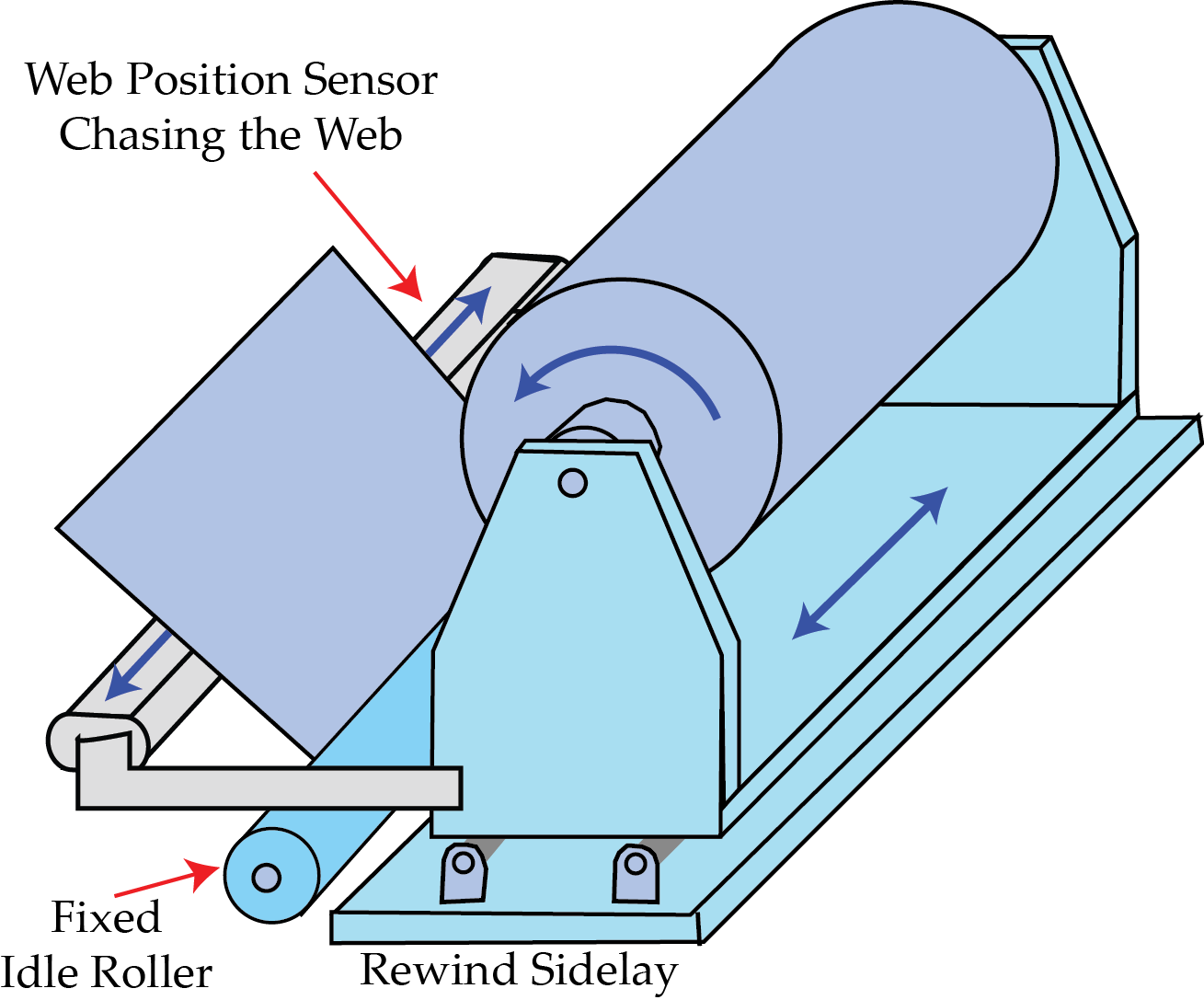
Finding the Best Web Guiding Equipment for Your Operation
As we search for the most appropriate equipment for our operation, we are faced with the task of selecting from myriad options based on technical data and specs. Through these data, measurements of accuracy, precision, linearity and resolution, manufacturers are trying to present the benefits of their products based on the device’s performance profile. However, sometimes what appears to be the best offer, based on what looks to be the best technical data, might not really be the best. The technical data can even be irrelevant information when considering performance. See performance indicators relevant to your system and how to apply this information to your applications.